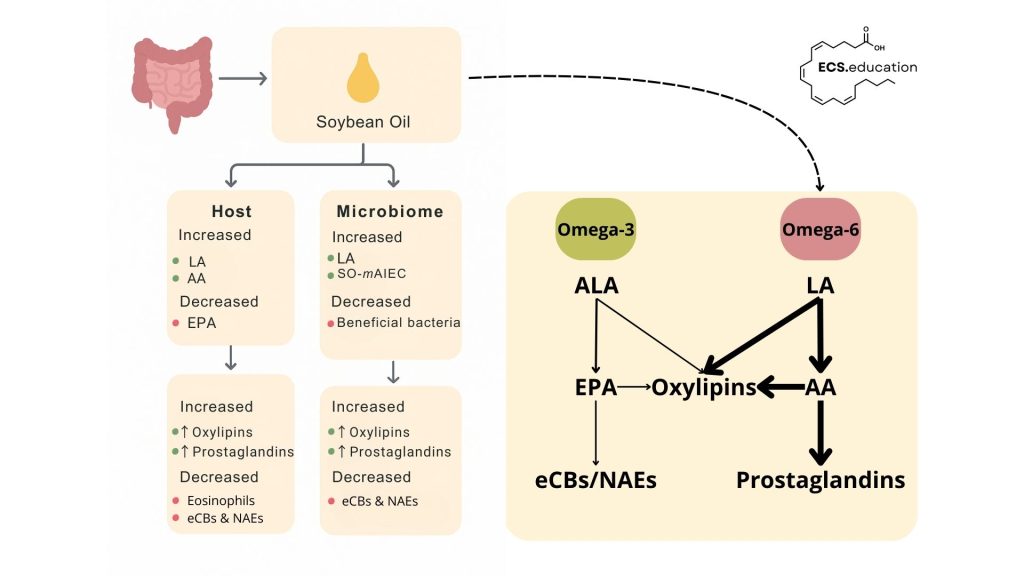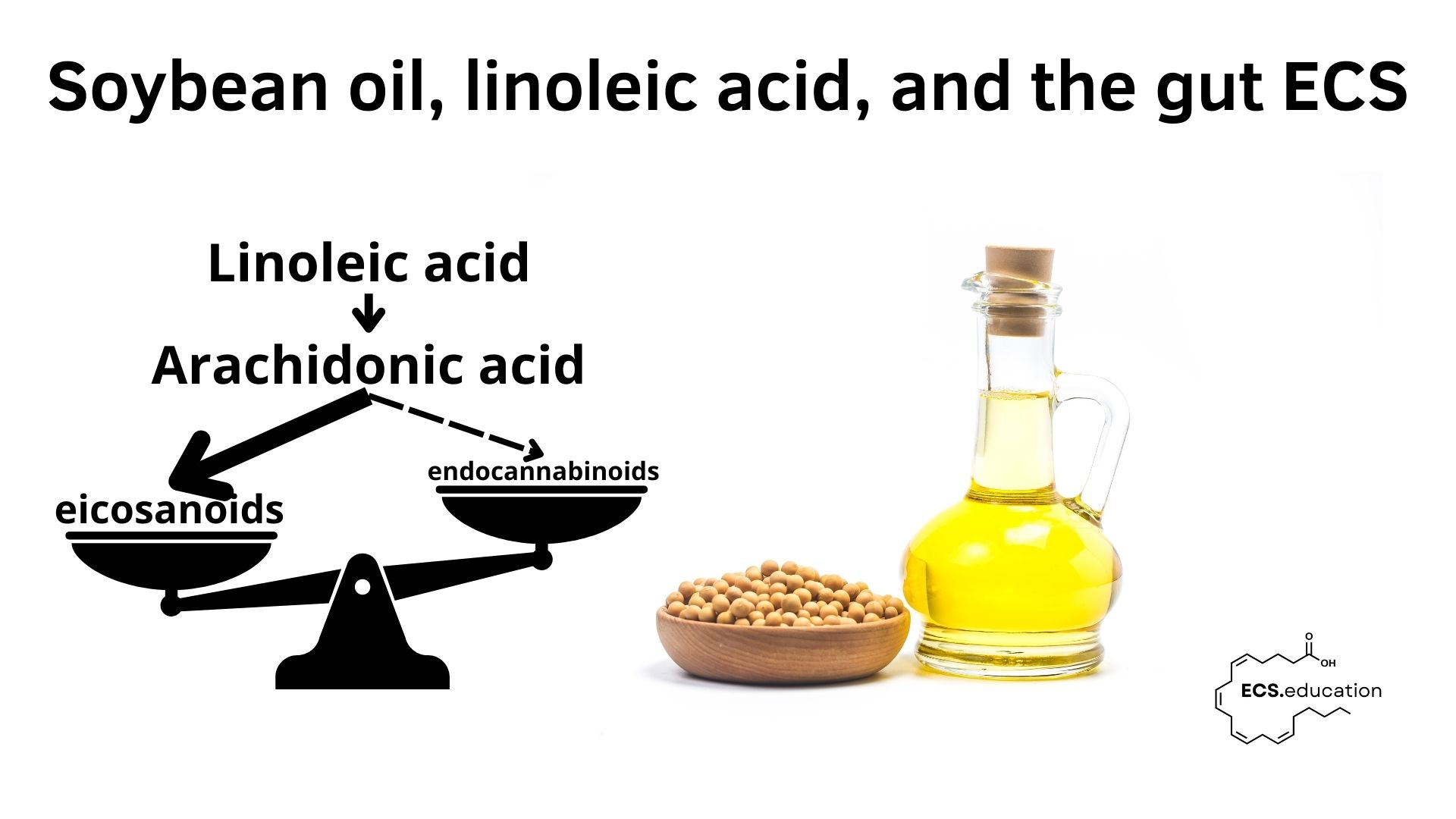A recent study titled ‘Diet high in linoleic acid dysregulates the intestinal endocannabinoid system and increases susceptibility to colitis in Mice‘ shows that eating a lot of linoleic acid from soybean oil changes lipid chemistry in the gut in a way that weakens the protective endocannabinoid system and strengthens inflammatory eicosanoids in intestinal epithelial cells, with similar directional changes observed in an LA‑selected E. coli grown in culture. In the mouse intestinal epithelium, soybean oil lowered both omega‑3–derived and omega‑6–derived endocannabinoid/NAE lipids, including anandamide and related ethanolamides, while oxylipins and prostaglandins increased. These host‑cell effects were present in germ‑free mice, confirming a microbiome‑independent component.
Microbes also make and reshape lipid mediators
Gut microbes can turn dietary fats into bioactive lipids and can also consume or degrade host endocannabinoid‑related lipids, so they directly influence local endocannabinoid tone. In this study, a mouse adherent‑invasive E. coli expanded on the soybean‑oil diet, used linoleic acid as fuel, produced more linoleic‑acid oxylipins and prostaglandin‑like products, and showed lower internal ethanolamides in culture. The LA‑selected E. coli mirrored the direction seen in host tissue by showing lower internal NAEs and higher oxylipin/prostaglandin‑like products when grown with soybean oil, indicating that microbes can further deplete or redirect local ECS mediators derived from dietary fats.
Why the host shifts toward omega‑6 output
Linoleic acid loads membranes with omega‑6 substrates. Phospholipase A2 can release arachidonic acid from those membranes, which then feeds cyclooxygenase, lipoxygenase, and cytochrome P450 to produce eicosanoids and other oxylipins. At the same time, shared precursors for endocannabinoid and NAE synthesis are effectively pulled away, so the measured endocannabinoid pool falls while prostaglandins and oxylipins rise. The study quantified this with an almost tenfold drop in the ALA→EPA product:substrate ratio, while LA→AA conversion was maintained in both conventional and germ‑free mice, implying enzyme competition and strong oxygenase demand that bias flux toward AA‑pathway eicosanoids.

Key clarification about host endocannabinoids
The soybean‑oil diet lowered endocannabinoid‑related lipids in the host epithelium, and this included omega‑6–derived endocannabinoids and NAEs such as anandamide and its related ethanolamides, not only omega‑3–derived species. In other words, even with surplus omega‑6 supply, the measurable pool of omega‑6 ECS ligands in intestinal epithelial cells went down while prostaglandins and oxylipins went up. The same decrease in ECS metabolites was observed in germ‑free mice, which shows that host cells alone can generate this pattern under high linoleic acid exposure.
Why this matters for barrier function
Endocannabinoid‑related lipids help keep the intestinal barrier tight and immune activity measured. When these lipids drop and prostaglandins rise, permeability increases and colitis becomes easier to trigger; the soybean‑oil diet also increased the P2‑HNF4α isoform, which is linked to weaker barrier function, pointing to a more lasting imprint beyond the immediate lipid changes.
How to act on this biology
Lowering dietary linoleic acid reduces the substrate pressure that pushes arachidonic‑pathway enzymes and selects LA‑adapted microbes. Providing EPA and DHA is more reliable than relying on ALA conversion when linoleic acid is high, and approaches that maintain ethanolamides or temper COX, LOX, CYP, and soluble epoxide hydrolase activities are logical to test alongside microbiome strategies that prevent expansion of LA‑adapted microbes and support beneficial taxa.
The included figure complements these points by separating host and microbiome effects and showing the substrate‑competition pull toward AA and oxygenase products.
Reference:
Deol P, Ruegger P, Logan GD, et al. Diet high in linoleic acid dysregulates the intestinal endocannabinoid system and increases susceptibility to colitis in Mice. Gut Microbes. 2023;15(1):2229945. doi:10.1080/19490976.2023.2229945

